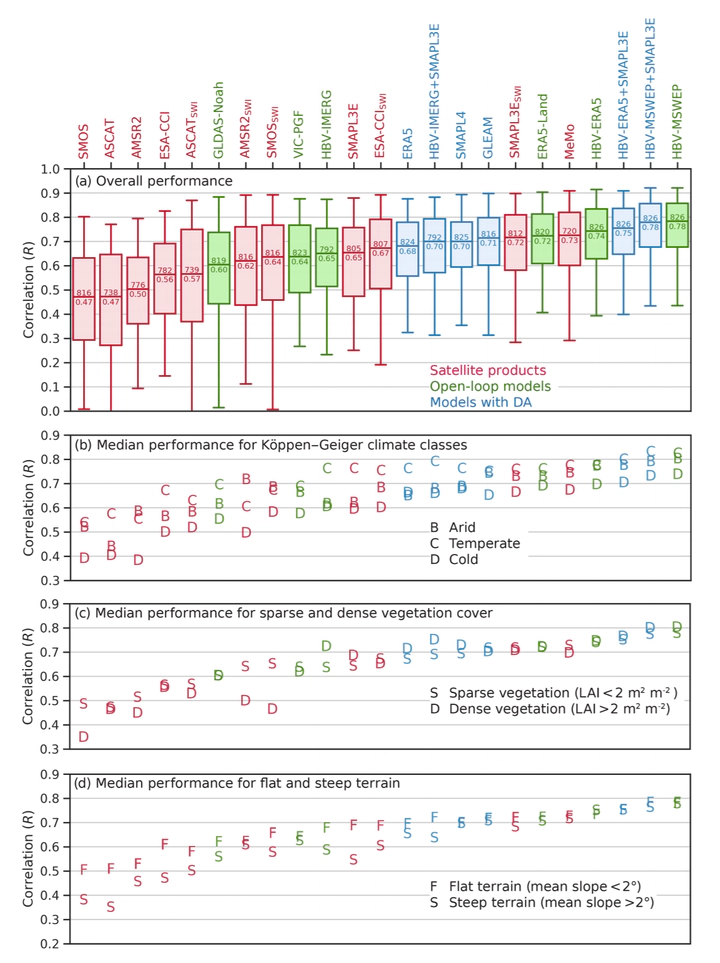Evaluation of 18 satellite- and model-based soil moisture products using in situ measurements from 826 sensors

Abstract
Information about the spatiotemporal variability of soil moisture is critical for many purposes, including monitoring of hydrologic extremes, irrigation scheduling, and prediction of agricultural yields. We evaluated the temporal dynamics of 18 state-of-the-art (quasi-)global near-surface soil moisture products, including six based on satellite retrievals, six based on models without satellite data assimilation (referred to hereafter as “open-loop” models), and six based on models that assimilate satellite soil moisture or brightness temperature data. Seven of the products are introduced for the first time in this study: one multi-sensor merged satellite product called MeMo (Merged soil Moisture) and six estimates from the HBV (Hydrologiska Byrans Vattenbalansavdelning) model with three precipitation inputs (ERA5, IMERG, and MSWEP) with and without assimilation of SMAPL3E satellite retrievals, respectively. As reference, we used in situ soil moisture measurements between 2015 and 2019 at 5 cm depth from 826 sensors, located primarily in the USA and Europe. The 3-hourly Pearson correlation (R) was chosen as the primary performance metric. We found that application of the Soil Wetness Index (SWI) smoothing filter resulted in improved performance for all satellite products. The best-to-worst performance ranking of the four single-sensor satellite products was SMAPL3E